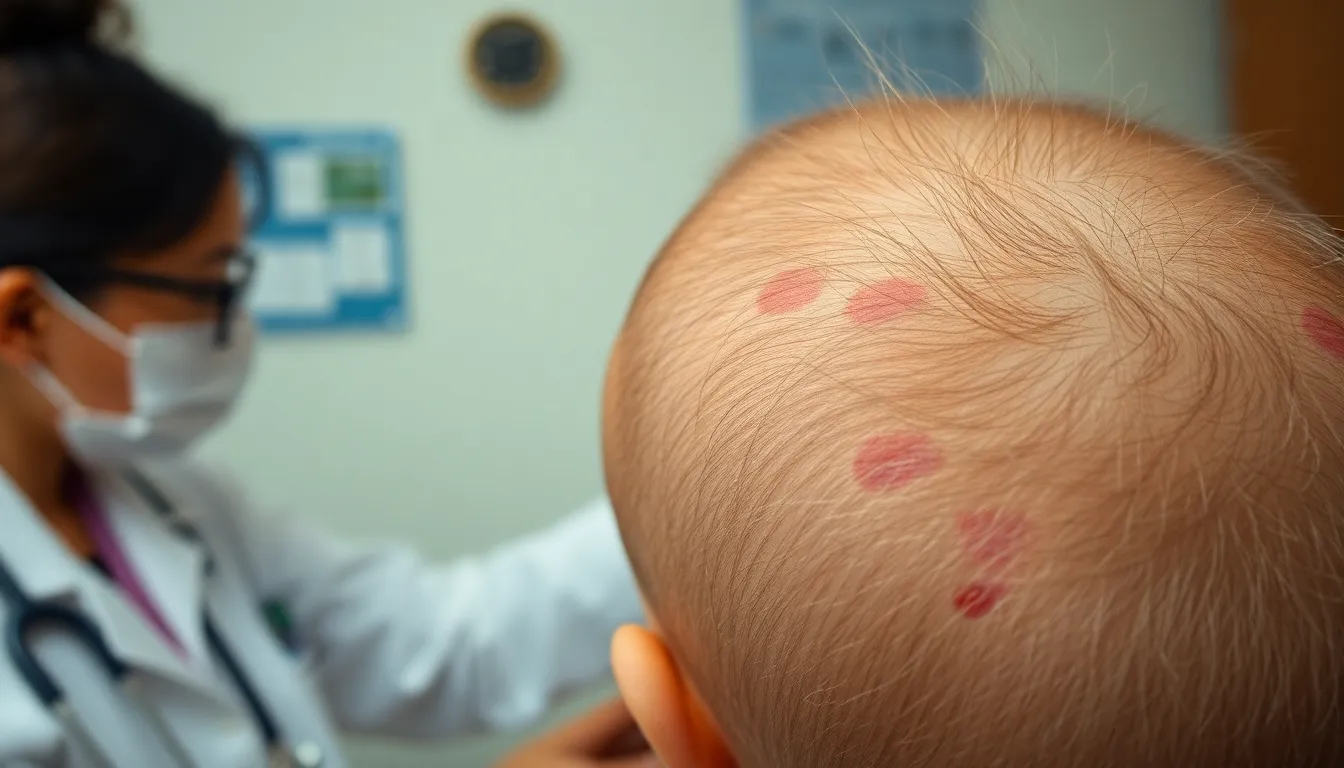Ringworm might sound like a bad pickup line from a medieval bard, but it’s actually a common skin infection that’s caused by fungi, not worms. This pesky condition can turn anyone’s skin into a patchwork of discomfort, leaving them itching for answers—and relief. Understanding what causes ringworm is key to avoiding this unwelcome guest in your life.
Table of Contents
ToggleUnderstanding Ringworm
Ringworm occurs due to fungal infections, not actual worms. Dermatophytes, a group of fungi, cause the condition. They thrive in warm, moist environments, leading to infections on various skin areas, such as the scalp, feet, or body.
Human-to-human transmission often occurs through direct contact. An infected person can spread the fungus through shared items like towels or clothing. Pets, especially cats and dogs, may also transmit ringworm. They carry the fungi on their skin or fur.
Skin-to-skin contact plays a significant role in the spread of the infection. Areas of skin covered with fungi can infect others during close interactions. Additionally, contact with contaminated surfaces, such as gym equipment or swimming pools, increases the risk of exposure.
Certain factors elevate the likelihood of developing ringworm. Individuals with weakened immune systems face higher susceptibility. Athletes engaging in sports with skin-to-skin contact frequently encounter this risk. Moist environments encourage the fungi to flourish, making places like locker rooms potential hotspots.
Preventing ringworm focuses on maintaining good hygiene. Regular handwashing with soap keeps the environment cleaner. Using antifungal powders in shoes or damp areas reduces fungal growth. Covering any skin lesions and avoiding close contact with infected individuals or animals lowers transmission risks.
Understanding the causes is crucial for avoiding ringworm. People can mitigate risks by following proper hygiene practices and being mindful of their surroundings.
Types Of Ringworm Infections

Various types of ringworm infections affect different regions of the body. Understanding these types helps in identifying and treating infections effectively.
Tinea Capitis
Tinea capitis primarily affects the scalp and hair. It typically causes round patches of hair loss and scalp itching. Symptoms may also include scaling and redness. Young children commonly experience this condition, often spreading it through close contact with infected individuals. Treatment often includes antifungal medications, either topical or oral, depending on the severity of the infection.
Tinea Corporis
Tinea corporis, also known as body ringworm, occurs on the skin’s non-hairy areas. This infection manifests as red, scaly patches with raised edges and a clear center, resembling a ring. Direct skin-to-skin contact or sharing contaminated items facilitates its spread. Adults and children alike can contract this condition. Antifungal creams or ointments generally offer effective treatment.
Tinea Pedis
Tinea pedis, commonly referred to as athlete’s foot, targets the feet. It presents as itching, burning, and peeling skin between the toes or on the soles. Moist environments like locker rooms and public showers provide ideal breeding grounds for the fungus. Individuals who frequently wear closed shoes may experience this condition more often. Over-the-counter antifungal powders and creams typically alleviate symptoms effectively.
Common Causes Of Ringworm In Humans
Ringworm infections can arise from several sources, primarily fungi. Understanding these causes plays a crucial role in prevention.
Fungal Infections
Fungi known as dermatophytes cause ringworm infections in humans. These fungi thrive in warm, moist conditions, making skin folds and communal areas common infection sites. People often encounter these fungi through direct contact with infected individuals or animals. Contaminated items such as towels or clothing also harbor these fungi, facilitating transmission. Some environments, particularly those that are humid, increase the likelihood of encountering dermatophytes. Consistent hygiene practices play an important role in reducing exposure.
Environmental Factors
Humidity and temperature significantly contribute to the spread of ringworm. Warm, damp environments serve as breeding grounds for fungi. Areas like gym showers, swimming pools, and locker rooms often increase the risk of encountering ringworm. In addition, wearing tight-fitting or non-breathable clothing traps moisture, favoring fungal growth. Individuals living in tropical or subtropical climates face a higher risk due to the consistent warm weather. Maintaining clean, dry skin helps minimize risks associated with these environmental factors.
Human Transmission
Human-to-human transmission of ringworm commonly occurs via direct contact. Infected individuals can easily spread the fungus, especially in close-knit communities or contact sports. Shared personal items like brushes, clothing, or bedding enable the fungus to transmit more effectively. Family members and friends often face elevated risks during interactions. Public areas such as gyms or locker rooms also facilitate the spread of the infection. Practicing good hygiene reduces the chances of transmission significantly.
Risk Factors For Developing Ringworm
Several factors contribute to the likelihood of developing ringworm infections. Understanding these can enhance preventive measures.
Poor Hygiene
Maintaining proper hygiene is crucial in preventing ringworm. Infrequent handwashing can allow fungi to thrive on skin. Dirty clothing or bedding often harbors fungi, increasing the risk of infection. Not showering after participating in sports or other activities can lead to fungal buildup. Additionally, neglecting to keep personal items separate can facilitate the spread of ringworm among family members or roommates. Individuals who don’t clean commonly used surfaces, such as gym equipment or communal showers, expose themselves and others to the risk of infection.
Weakened Immune System
Individuals with weakened immune systems face a higher risk of acquiring ringworm. Conditions like diabetes and HIV can significantly impair the body’s ability to fight infections. Medications that suppress immune function, such as corticosteroids, heighten susceptibility as well. People undergoing chemotherapy may also experience compromised defenses against fungal infections. Age can play a role too, with younger children and older adults being more vulnerable. Weak immune responses allow dermatophyte fungi to infect previously healthy skin, making vigilance essential for those at risk.
Close Contact
Close contact increases the chances of ringworm transmission. Activities like wrestling or other contact sports promote skin-to-skin exposure, facilitating spread among teammates. Sharing personal items, such as towels or combs, heightens risk within households or communal settings. Pets can transfer fungi to humans through direct contact, adding another layer of transmission. Community environments, including schools and daycare centers, often harbor numerous infections due to the proximity of individuals. Awareness of these factors can help mitigate the likelihood of contracting ringworm.
Understanding what causes ringworm in humans is crucial for effective prevention and management. The infection arises from dermatophytes thriving in warm and moist environments, making certain conditions more conducive to its spread. Awareness of transmission routes such as direct contact and shared items can help individuals take necessary precautions.
Maintaining good hygiene practices and being mindful of risk factors can significantly reduce the chances of contracting ringworm. By staying informed and proactive, individuals can protect themselves and their communities from this common fungal infection.




